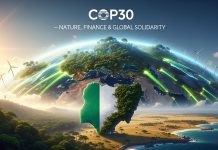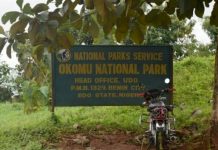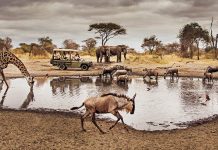Okomu National Park, formerly known as the Okomu Wildlife Sanctuary, is one of Nigeria’s most important natural reserves, showcasing a noteworthy portion of the country’s remaining rainforest ecosystem. Located in Edo State, this park is important for biodiversity conservation and serves as a habitat for numerous endangered species. This article provides an extensive overview of Okomu National Park, covering its historical background, ecological diversity, visitor experiences, challenges, and conservation efforts.
Overview
Geographic Location
Okomu National Park is situated in the Ovia South-West Local Government Area of Edo State, approximately 60 kilometers northwest of Benin City. It covers an area of about 200 square kilometers within the larger Okomu Forest Reserve, which spans 1,082 square kilometers. The park is located between latitudes 6° 15ʹ and 6° 25ʹ North and longitudes 5° 9ʹ and 5° 23ʹ East. This region represents one of the last remnants of the once extensive lowland rainforest that characterized the area.
Ecological Significance
As the smallest of Nigeria’s seven national parks, Okomu National Park is important for preserving biodiversity. It contains a variety of ecosystems including swamp forests and high forests, supporting numerous plant and animal species unique to this region.
Historical Background
Okomu National Park has a rich history tied to the preservation of Nigeria’s natural heritage. Originally established as a wildlife sanctuary in 1935 from the Okomu Forest Reserve, it was formally defined in 1986 with an area of just 66 square kilometers. The Nigerian Conservation Foundation (NCF) managed the sanctuary from 1987 until it was transferred to the National Park Service in May 1999.
Historically, the area has faced significant human pressure, including deforestation and land clearing for agriculture. Archaeological evidence indicates that the forest has been cleared and regenerated over the last 700 years. By the early 20th century, only fragmented patches of forest remained due to extensive human activity.
Ecological Diversity
Flora
Okomu National Park is characterized by a rich diversity of plant species typical of the Guinea-Congo lowland rainforest ecosystem. The park is home to approximately 90 native plant species belonging to 45 different families, with the Euphorbiaceae and legume families being particularly prominent. Among the notable tree species are Kapok (Ceiba pentandra), Triplochiton scleroxylon, and Antiaris africana.
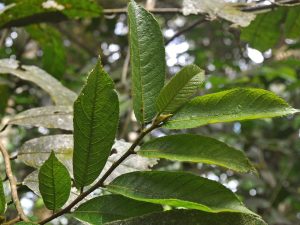
The park is recognized for its mature secondary forest, which provides crucial habitat for various wildlife species. Additionally, a survey identified 60 beneficial medicinal plant species within the reserve, including 50 leafy plants and 10 types of mushrooms, showing the area’s importance for traditional healthcare practices among local communities.
Fauna
Okomu National Park supports a diverse array of wildlife, with 33 mammal species recorded, including the endangered African forest elephant (Loxodonta cyclotis) and the African buffalo (Syncerus caffer). Although elephant sightings are rare—highlighted by the discovery of a one-year-old elephant carcass in 2007—park officials assert that poaching has decreased. The park also harbors vulnerable primate populations, including the white-throated guenon (Cercopithecus erythrogaster). While extensive studies on primates have not been conducted since 1982, reports indicate that chimpanzees may inhabit the region, with estimates suggesting a population of 25-50 individuals in the Okomu Forest Reserve as of 2003.
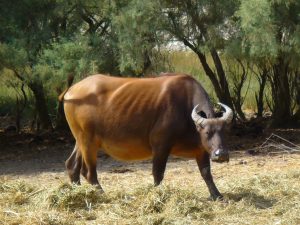
Other notable fauna include dwarf crocodiles, red river hogs, sitatunga, warthogs, civet cats, Maxwell’s duikers, grass cutters, mona monkeys, Thomas’s galagos, tree pangolins, and red-capped mangabeys (Cercocebus torquatus).

The avian (relating to brids) population is equally impressive, with around 150 bird species identified within the park. Noteworthy species include the Angolan pitta, grey parrot, wrinkled hornbill, fish eagle, various hawks and woodpeckers, as well as several types of negrofinches and cuckoos.
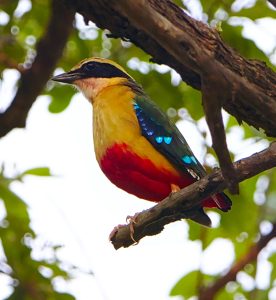
In terms of invertebrates, Okomu National Park owns over 700 butterfly species. However, terrestrial mollusks appear particularly vulnerable to extinction; a survey identified only 46 species across 11 families in one area of the forest. This low diversity may signal underlying environmental issues that require further investigation.
Overall, Okomu National Park serves as a vital sanctuary for both flora and fauna, emphasizing its ecological importance in preserving Nigeria’s rich biodiversity.
Visitor Experience
Okomu National Park offers various amenities and activities for visitors looking to tour its natural beauty:
- Accommodation: Visitors can stay in chalets built on stilts near the park entrance.
- Guided Tours: Knowledgeable guides lead nature walks that highlight the park’s flora and fauna.
- Tree Houses: Two tree houses provide elevated views for birdwatching and observing wildlife.
- Ecotourism Activities: Popular activities include birdwatching, wildlife viewing, canopy tours, and educational programs focused on conservation.
The park is accessible year-round but is best visited during the dry season when wildlife is more active.
Challenges and Conservations outlook
Okomu National Park faces numerous challenges that threaten its ecological integrity:
- Deforestation: Illegal logging activities and agricultural encroachment continue to reduce forest cover.
- Poaching: Despite efforts to curb it, poaching remains a significant threat to endangered species within the park.
- Human-Wildlife Conflict: As local populations expand into park boundaries for farming and hunting, conflicts arise over land use.
To combat these issues, conservation strategies include:
- Strengthening law enforcement against poaching and illegal logging.
- Engaging local communities in sustainable practices that reduce pressure on park resources.
- Establishing partnerships with NGOs and government agencies to improve conservation efforts.
Final Note
Okomu National Park represents a critical area for biodiversity conservation in Nigeria. Its rich ecological diversity and historical significance underscore its importance as both a natural sanctuary and a potential hub for eco-tourism. However, ongoing threats from human activities necessitate robust conservation measures. By encouraging community involvement and implementing sustainable practices, Okomu National Park can continue to thrive as an essential ecological resource for future generations.
